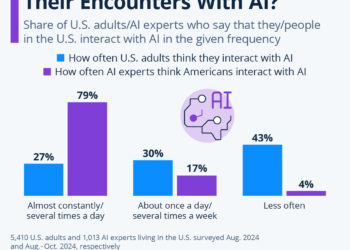The emergence of Agentic AI marks a significant shift in artificial intelligence technology. This tutorial aims to demystify the concept of Agentic AI, explaining its functionality, applications, and significance in various fields.
What is Agentic AI?
Agentic AI refers to artificial intelligence systems capable of taking autonomous actions to achieve specific goals. Unlike traditional AI, which primarily focuses on data analysis and predictions, Agentic AI operates with a degree of self-governance and decision-making abilities.
Key Characteristics of Agentic AI
- Autonomy: Can make independent decisions based on its programming and learned data.
- Goal-Oriented: Designed to accomplish specific objectives without human intervention.
- Learning Capability: Employs machine learning techniques to adapt and improve over time.
How Does Agentic AI Work?
Agentic AI systems rely on advanced algorithms and machine learning models to function effectively. The integration of natural language processing (NLP) and computer vision enhances their capacity to interpret and interact with their environments.
Core Components of Agentic AI
-
Sensors and Data Inputs:
- Collect data from the surrounding environment (visual, auditory, sensory).
-
Processing Unit:
- Analyzes and interprets incoming data to understand context and make decisions.
-
Decision-Making Algorithms:
- Implements strategies for achieving goals based on analyzed data.
- Actuators:
- Executes actions in the real world, influenced by decisions made by the processing unit.
Applications of Agentic AI
Agentic AI finds applications across numerous sectors, demonstrating its versatility and effectiveness.
Key Sectors Utilizing Agentic AI
-
Healthcare:
- Autonomous robots assisting in surgeries or patient care.
- AI systems managing healthcare data for efficient decision-making.
-
Finance:
- Algorithms for fraud detection and risk management.
- Trading bots executing market strategies based on data trends.
-
Transportation:
- Self-driving vehicles navigating based on real-time traffic data.
- Drones for delivery services, optimizing routes autonomously.
- Manufacturing:
- Robot assistants optimizing production line processes.
- Maintenance systems predicting equipment failures before they occur.
Developing Agentic AI
Creating an Agentic AI system involves a multi-step process that requires expertise in various domains.
Steps in the Development Process
-
Define the Objectives:
- Clearly outline what the AI is expected to achieve, such as improving efficiency or providing recommendations.
-
Data Collection:
- Gather relevant datasets necessary for training the AI.
-
Model Selection:
- Choose appropriate algorithms and frameworks suited for the intended task. Options include reinforcement learning or supervised learning methods.
-
Training the Model:
- Use the collected data to train the AI, adjusting parameters to enhance performance.
-
Testing and Validation:
- Rigorously test the AI to ensure it meets the defined objectives and performs reliably under various conditions.
- Deployment:
- Implement the AI system in the desired environment, monitoring its performance and making adjustments as necessary.
Challenges in Agentic AI Development
While the potential of Agentic AI is immense, its development poses various challenges.
Common Challenges
-
Ethical Considerations:
- Ensuring responsible use of AI to avoid bias and discrimination.
-
Data Privacy:
- Protecting sensitive information while utilizing vast datasets for training.
-
Complexity of Interactions:
- Designing systems that can effectively interpret and respond to intricate human behaviors or environmental conditions.
ADVERTISEMENT - Regulatory Compliance:
- Navigating the evolving legal landscape concerning AI deployment and autonomy.
ADVERTISEMENT
Future of Agentic AI
The evolution of Agentic AI continues to promise exciting advancements in technology. As researchers and developers work to enhance its capabilities, the potential for groundbreaking applications increases, reshaping industries and everyday life.
By understanding the fundamental principles and challenges of Agentic AI, individuals and organizations can better navigate this transformative technology and leverage its capabilities for future advancements.






